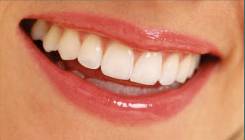Now that your braces have been removed, you and your orthodontist want you to keep that healthy, beautiful smile. Your orthodontist has determined that the best way for you to do that is by wearing a retainer(s). While wearing a retainer is simple, it is a very complex and powerful appliance. A retainer is an important part of your orthodontic treatment. A retainer is designed to keep your teeth where your braces moved them. There are a variety of retainers. Some are removable and some are fixed- that is, they are cemented to your teeth. Your orthodontist will provide the kind of retainer that best maintains the new positions of your teeth.
Follow your orthodontist’s instructions.
Your retainer is designed to perform a vital role in your overall orthodontic treatment.
It’s very important that you wear your retainer exactly as you have been instructed. Otherwise your treatment goals may not be maintained. You may need to wear your retainers quite a while, so be patient. Each person’s case is different. Follow your orthodontist’s instructions for wearing your retainers. In some cases, permanent retention will be necessary. Your orthodontist will determine how long you’ll need to wear retainers.
It’s really up to you.
If your retainers are to do their important job, you must do three things:Wear them as directed
Retainers are effective only if you faithfully follow your orthodontist’s instructions for wearing them. Remember: wearing that retainer after your braces are removed is the best way to preserve that healthy, beautiful smile you worked so hard to get.
Keep them clean.
If you’ve been fitted with a removable retainer, it’s easy to clean when you take it out.
If your retainer is attached to your teeth, it’s important to brush thoroughly after meals and clean under the wire with dental floss at least once a day.
Whether your retainer is removable or fixed, make sure you see your dentist for a thorough cleaning every six months.
Handle them with care
Remember: whenever your retainer is not in your mouth, it should be in its case for safety. Retainers are easier to lose than you think, and they’re expensive to replace.
If you are instructed to wear your retainer for only a part of the day, keep it in its case when it’s not being worn, so it won’t be damaged or lost
Depending on the way your retainer is made, your orthodontist may even instruct you to keep it in a moist environment when you’re not wearing it.











